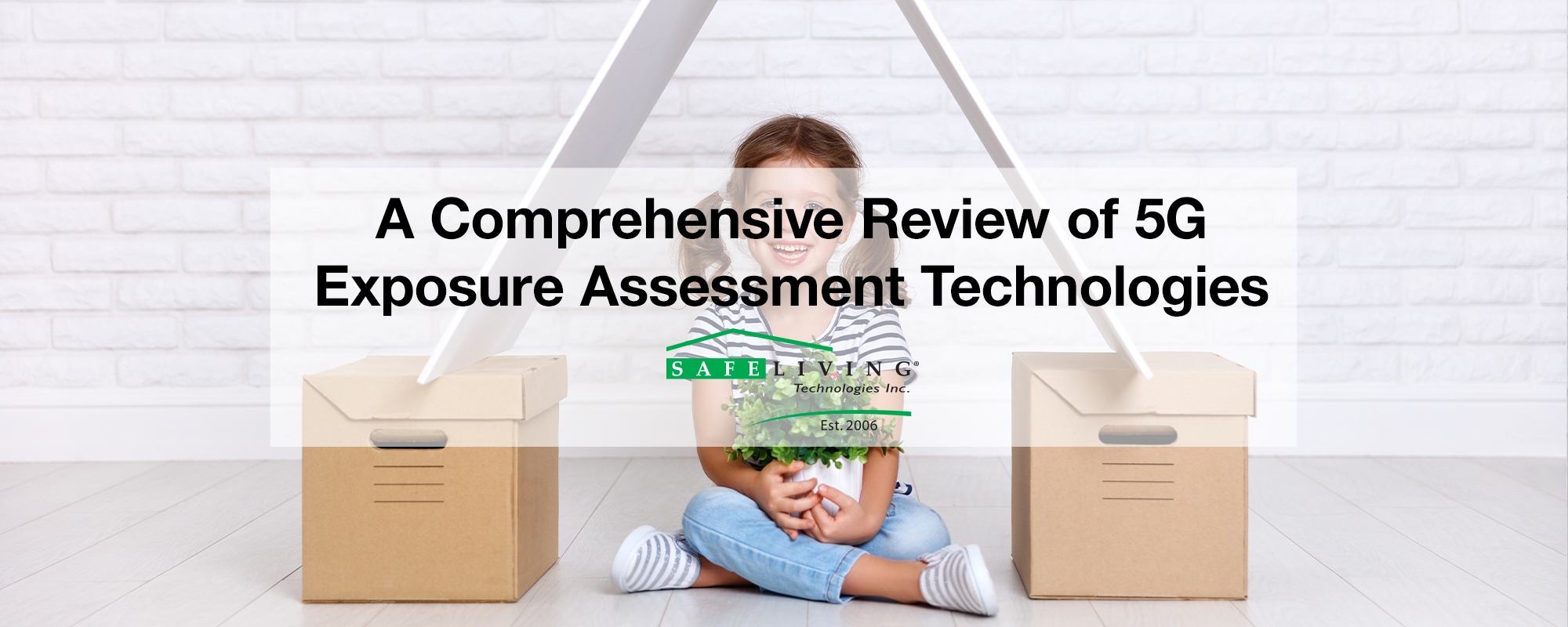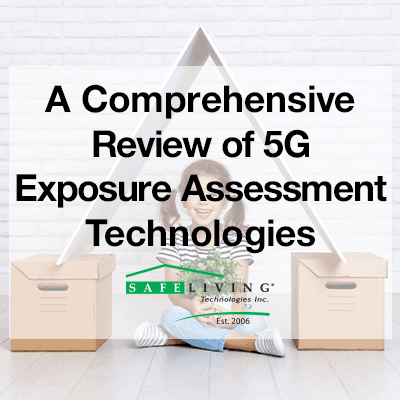A Comprehensive Review of 5G Exposure Assessment Technologies

A comprehensive review of 5G NR RF-EMF exposure assessment technologies: fundamentals, advancements, challenges, niches, and implications
Korkmaz E, Aerts S, Coesoij R, Bhatt CR, Velghe M, Colussi L, Land D, Petroulakis N, Spirito M, Bolte J. A comprehensive review of 5G NR RF-EMF exposure assessment technologies: fundamentals, advancements, challenges, niches, and implications. Environ Res. 2024 Jul 6;260:119524. doi: 10.1016/j.envres.2024.119524.
Highlights
- Monitoring exposure to radiofrequency electromagnetic fields (RF-EMF) is crucial for environmental health and risk assessment
- A comprehensive review of the diverse landscape of RF-EMF assessment tools was missing.
- There is a definite need for cost-effective and long-lasting EMF sensors.
- Custom-developed RF-EMF measurement tools lack a standardized framework for comparison and validation.
Abstract
This review offers a detailed examination of the current landscape of radio frequency (RF) electromagnetic field (EMF) assessment tools, ranging from spectrum analyzers and broadband field meters to area monitors and custom-built devices. The discussion encompasses both standardized and non-standardized measurement protocols, shedding light on the various methods employed in this domain. Furthermore, the review highlights the prevalent use of mobile apps for characterizing 5G NR radio network data. A growing need for low-cost measurement devices is observed, commonly referred to as “sensors” or “sensor nodes”, that are capable of enduring diverse environmental conditions. These sensors play a crucial role in both microenvironmental surveys and individual exposures, enabling stationary, mobile, and personal exposure assessments based on body-worn sensors, across wider geographical areas. This review revealed a notable need for cost-effective and long-lasting sensors, whether for individual exposure assessments, mobile (vehicle-integrated) measurements, or incorporation into distributed sensor networks. However, there is a lack of comprehensive information on existing custom-developed RF-EMF measurement tools, especially in terms of measuring uncertainty. Additionally, there is a need for real-time, fast-sampling solutions to understand the highly irregular temporal variations EMF distribution in next-generation networks. Given the diversity of tools and methods, a comprehensive comparison is crucial to determine the necessary statistical tools for aggregating the available measurement data.
Conclusions
The objective of this review was to establish a groundwork for progress in the field of RF-EMF exposure assessment, ultimately contributing to a more thorough and efficient assessment. This review provides a comprehensive overview of the current state-of-the-art concerning RF-EMF measuring instruments. It covers a wide array of tools, such as spectrum analyzers, broadband field meters, area monitors, personal exposimeters, and custom-built instruments, as well as the existing measurement protocols, encompassing both standardized and non-standardized methods. In addition, we also have presented some of the most commonly used mobile apps for collecting 5G NR radio network data, which have also been used in RF-EMF exposure assessments. However, it is not yet clear on how accurate the measurement results of these apps are and how they compare among themselves and to more sophisticated tools.
Most importantly, this review revealed the need for cost-effective and long-lasting measurement devices or sensors that are capable of collecting data at a high time resolution in various frequency bands, as well as withstanding various environmental conditions. These sensors are essential for conducting stationary, mobile, and personal exposure assessments across larger geographical areas, time intervals, and populations than current capabilities allow. Additionally, it is important to recognize that the specific requirements for these sensors differ based on their intended usage, e.g., on-body measurement devices need to take into account the influence of the body, vehicle-integrated sensors the influence of the speed and the relative position of the sensor on the vehicle, and sensors on infrastructure the influence of the height and the building materials. Furthermore, there exists a demand for real-time, fast-sampling solutions to comprehend the highly irregular temporal variations in EMF distribution within next-generation networks.
Moreover, there is a notable absence of extensive information regarding currently employed custom-developed RF-EMF measurement tools, particularly with respect to measuring uncertainty. Considering the diversity of tools and methodologies in use, conducting a thorough comparison becomes crucial to identify the necessary statistical tools for aggregating the available measurement data.
A more in-depth discussion relating the current 5G NR assessment methods to measurement equipment is intended for a follow-up study, which will describe more in detail the requirements, opportunities, and priorities for new, low-cost, custom-built measurement equipment.
Open access paper: https://www.sciencedirect.com/science/article/pii/S0013935124014294
Related Posts
5G Wireless Technology: Is 5G Harmful to Our Health?
5G Wireless Technology: Millimeter Wave Health Effects
--
Joel M. Moskowitz, Ph.D., Director
Center for Family and Community Health
School of Public Health
University of California, Berkeley
Electromagnetic Radiation Safety
Website: https://www.saferemr.com
Facebook: https://www.facebook.com/SaferEMR
Twitter: @berkeleyprc


